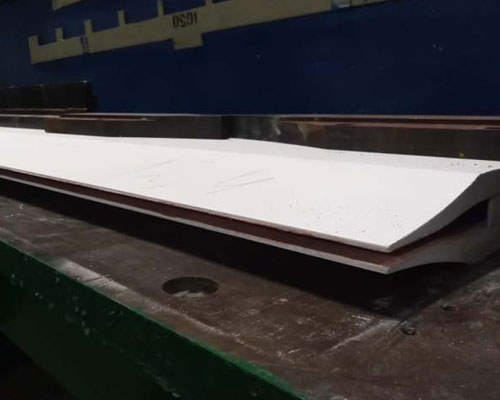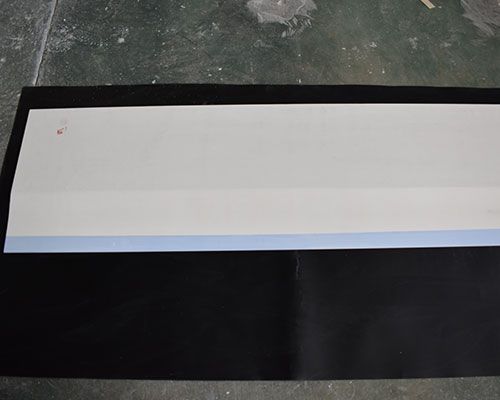By combining a pair of elongated feed nozzle components with a non-corrosive cushion, a molten metal feed nozzle for a continuous roll casting machine is made. The feed port nozzle members are spaced a sufficient distance apart to allow molten metal to pass through the downstream edge to engage the surface of the continuous casting roll. A cushion is fixed to the outer surface of each feed tip nozzle member along the downstream edge. The cushion includes at least one outer surface that is less aggressive than the material forming the feed nozzle member to minimize the scraping of the roller. The upstream portion of the cushion pad contains a material that expands when heated, so that the outside of the pad fits the surface of the adjacent roller.
Generally, continuous casting of molten aluminum is used in a commercial-scale operation. The continuous caster process usually includes a pair of rotating water-cooled caster rolls, where the molten metal enters the rotating caster roll through a feed nozzle just before the production line closest to the caster roll. By contact with the water-cooled casting roll, heat is rapidly extracted from the molten metal, and the molten metal freezes when it comes into contact with the water-cooled casting roll. The solid metal is compressed as it passes through the gap between the continuous casting rolls, and the thickness of the emerging metal is determined by the narrowest distance between the continuous casting rolls. The thin metal sheet comes out of the continuous casting roll and has a width of several meters and a thickness of about one to six millimeters. The speed of the casting process is about 1-4 meters per minute, and each run can last for several days.

An important part of the casting process is the feed nozzle, which delivers the molten metal directly into the gap between the two continuous caster rolls. This process usually makes the top and bottom surfaces of the feed nozzle directly contact the continuous casting roll. Generally, the feed nozzle is made of a harder and more aggressive material than the steel caster material, such as alumina or alumina-silica fiber. The interaction between the movable continuous casting roll and the hard feed nozzle can cause the embedding of scratches into the softer casters.
After the metal has solidified, when the metal passes and is compressed to conform to the thickness defined by the narrowest gap between the casting rolls, these scratches embedded in the casting rolls are applied to the metal again. The end result is the production of a continuous metal sheet with scratches, which is usually represented by raised ridges that extend above the expected thickness of the metal sheet, which is defined by the narrowest gap between the casters determine.
Currently, the only way to eliminate the scratches transferred to the metal plate during the die casting process is to use a feed nozzle with little or no bend. It can resist the absorption of water; and has the heat and strength characteristics required for the successful casting of non-ferrous metals.

